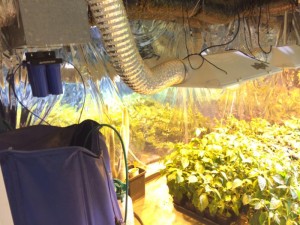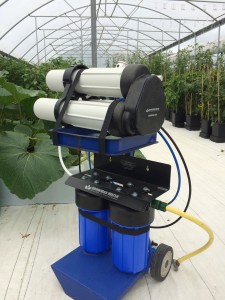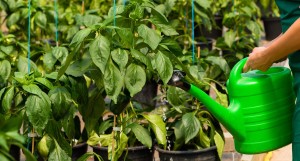To get a quality harvest, and regardless the season of the year in which we are going to consider creating a crop, whether indoor or outdoor, it’s always good to know and take into account the parameters with which we are going to work. Identifying our strengths and weaknesses, both at the level of technical knowledge and knowing the variety and the place of cultivation, are not easy tasks and the only way to know them is through experience. Later will come time to improve, to try other techniques and methods. Quality cannabis is a cluster of small factors. What a few growers are raised from the beginning is with what quality of water they will work …
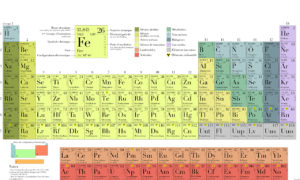
Periodic table of elements
WHICH ALL CULTIVATORS HAVE IN COMMON? WATER
Whether for gardens, fruits, vegetables, flowers or cannabis, all growers need water to irrigate. Depending on the area where we are, we will have a water quality or another, and the way we are going to treat it will make us to get an extra quality and more production from our harvest. Most growers usually use tap water, the one they have the most at hand and why not say it: the cheapest one. Water helps us to add fertilizers and nutrients, so using tap water is not a good tool to start working with, if we want to take it seriously.
Then ask yourself this question, if you do not drink tap water and you only drink it bottled, why give it to your plants? Do you remember the phrase “cheap is expensive”? Well, in the case of using tap water without a previous treatment, it can be very expensive. But why?
To begin with, we will avoid possible problems of deficiencies and excesses: as we do not know how many minerals and in what proportion they are, it will be difficult to find out if any of our plants shows bad signs and which ones they are. This stresses plants and the fact of finding out late what kind of lack or excess is, can cause real headaches, slow down the cycle of the natural phase of the plant and decrease the aroma, quantity and quality of the fruit.
WHAT WE HAVE TO DO TO TREAT WATER?
Tap water contains hundreds of dissolved substances in different amounts, such as mineral salts, phosphates, sediments, heavy metals, remains of the same pipes, and as we know ALL the municipal waters contain chlorine.
CHLORINE
Remember that it is a chemical element added by the human, essential for the supply of drinking water since it kills bacteria, viruses, fungi and parasites. At the same time, it is the number one enemy of the beneficial microorganisms present in the substrate, whose function is to keep the roots clean and healthy, which will negatively influence the absorption of nutrients and fertilizers at 100% and prevent the formation of a good root ball burning the roots. Remember that the formation of a good root ball is essential to have large flowers and obtain success when harvesting, as in cannabis plants occurs the same as in icebergs, we only see the exterior’s although the largest part is the one that is not seen and it’s the most important!
 Scheme of an entire iceberg
Scheme of an entire iceberg
EC
A high EC can also be a problem. EC or electro-conductivity is the measure of the amount of dissolved mineral salts contained in water. It also contains dissolved pollutants such as heavy metals (Lead, Cadmium, Boron, Arsenic, Mercury …) that can be toxic to your plants (just like for the human body).
PH
Is the numerical value that expresses the concentration of hydrogen ions and measures the degree of acidity or alkalinity of water. We can measure acids through the concentration of hydrogen ions: strong acids have a high concentration of hydrogen ions and weak acids have a low concentration.
Plants, like people, have pH variations. If they do not have an adequate pH they will not have good health, being more exposed to the attack of fungi, viruses and unwanted insects. A recommended pH for the crop is between 6.5 and 7.5. We can achieve this by using a reverse osmosis unit, which will help us to stabilize the pH of the water, since the reverse osmosis water has a pH level of approximately 6.5 and not all the elements are absorbed in the same range.

Nutrient absorption values table
CALCIUM AND MAGNESIUM
Calcium and magnesium are the other two main enemies to fight in the water. Although they are also nutrients for plants, they are found in water in the form of small crystals that are embedded in the roots and prevent nutrients and fertilizers from being absorbed.
Healthy roots can absorb 100% of the added nutrients. A high amount of mineral salts in your water can cause a saturation in the roots and can not absorb the necessary nutrients. Keep in mind that plants can reach up to 1.4 or up to 2.2 EC, depending on the genetics and stage of the crop. If for example the water we use has an EC of 1.0, we can only add nutrients up to 0.4 or 1.2 to reach the maximum levels. If on the contrary we start with a water of 0.1-0.2 or even 0.0 we can add many more nutrients to our plants.
TEMPERATURE AND HUMIDITY
Two other factors to take into account are the temperature (T / oC) and relative humidity (%). The higher the temperature, the greater need for irrigation. Depending on the combination of both parameters, some conditions or others that may affect the process, especially in transpiration and the assimilation of plant nutrients, will occur. The relationship between both parameters is called vapor pressure deficit or DPV (you can consult more information here).
 DPV table
DPV table
IRRIGATION
Another key factor to have healthy and strong plants is irrigation. To begin with, we must choose which system we are going to use: manual, automatic or immersion (hydroponics will be discussed later, in an extended manner). There are also other systems on the market such as Auto Pot or similar.
The schedule in which we are going to water is another factor to consider. The best is water early in the day although some people prefer to do it at the last hour of the day. Depending on the conditions of the room and/or the place, we could expose ourselves to high levels of humidity during the night, since there is no light or heat to evaporate the water, which would lead us to take unnecessary risks of the appearance of fungi. It is advised to have a good ventilated room and the use of an air dehumidifier according to our needs.
THE GENETICS
Another of the main factors will be the choice of a good quality genetics and within the thousands of existing varieties to date, each grower has their preferences and knowledge but we advise those of a well-known bank with a good reputation.
The choice of the variety will also depend on the environment in which we are going to cultivate. For example, if we do it in a small indoor place, indica varieties may be a good option but if we do it in a large and spacious outdoor area, we may prefer a more sativa strain. If we take into account that outdoor is usually collected (as a general rule although there are always exceptions) between mid-September and the last of October, we will also have to take into account the area in which we live and its climatic conditions before these dates arrive.

Freshly Germinated Sprout
In the next article we’ll continue talking about the importance choosing a good substrate, fertilizers, time to harvest, drying and curing.


 In many cases, water from a well or a canal is used for irrigating a garden. While quality always differs from zone to zone, it’s never advisable to use well water, without a previous water analysis, due to possible presence of bacteria as well as pesticides and herbicides that can come from neighboring farms.
In many cases, water from a well or a canal is used for irrigating a garden. While quality always differs from zone to zone, it’s never advisable to use well water, without a previous water analysis, due to possible presence of bacteria as well as pesticides and herbicides that can come from neighboring farms.  Hard Water
Hard Water

 We can follow the irrigation advice previously written to achieve the best results, but if we do it with chlorinated water we won’t get them. Vegetables and fruits won’t be of such quality as we want, because chlorine will interfere on the results.
We can follow the irrigation advice previously written to achieve the best results, but if we do it with chlorinated water we won’t get them. Vegetables and fruits won’t be of such quality as we want, because chlorine will interfere on the results.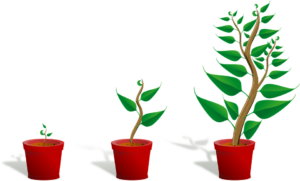
 There are a lot of fertilizer products and nutritional supplements to feed our plants: compost products, fluid products or even solid. Adding these products, we give all the essential nutrients to the plants, according to their needs in each growing stage, to prevent the symptoms and problems explained above.
There are a lot of fertilizer products and nutritional supplements to feed our plants: compost products, fluid products or even solid. Adding these products, we give all the essential nutrients to the plants, according to their needs in each growing stage, to prevent the symptoms and problems explained above.